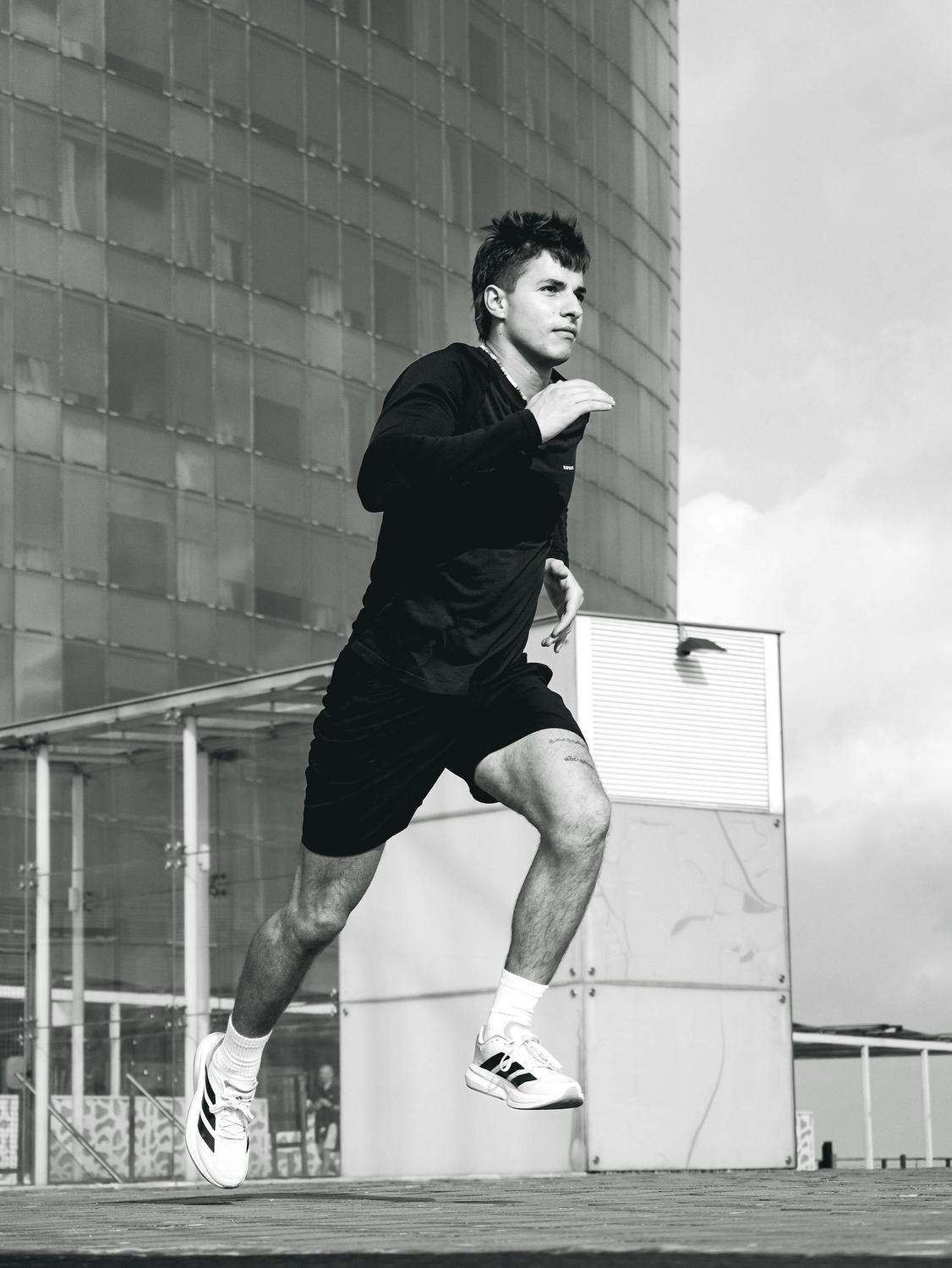Seven out of ten adults experience stress or anxiety daily, with most reporting it moderately to significantly interferes with their lives. In Australia, where an estimated one in five people aged 16–85 have experienced a mental disorder in the past 12 months, the burden of chronic stress extends far beyond mental discomfort. It manifests as disrupted sleep, compromised immune function, altered appetite regulation, and increased cortisol-driven abdominal fat accumulation—all factors that complicate weight management efforts and overall health outcomes.
The paradox is striking: when stress levels peak, physical activity often becomes the first casualty of overwhelmed schedules and depleted mental resources. Yet comprehensive research demonstrates that exercise represents one of the most effective, evidence-based interventions for stress reduction. A landmark 2023 study published in the British Journal of Sports Medicine, analysing 97 reviews encompassing 1,039 trials and 128,119 participants, found exercise to be 1.5 times more effective than counselling or leading medications for managing depression. The challenge lies not in whether exercise reduces stress—the evidence is unequivocal—but in how individuals can strategically channel their stress into productive exercise sessions rather than allowing it to derail physical activity altogether.
How Does Stress Affect Your Body and Weight Management Efforts?
Understanding the physiological cascade triggered by chronic stress provides essential context for why channeling stress into productive exercise sessions becomes particularly crucial for individuals pursuing weight management goals.
Chronic stress activates the hypothalamic-pituitary-adrenal (HPA) axis, resulting in sustained cortisol hypersecretion. This hormonal state preferentially directs fat storage to the abdominal region—what researchers term “toxic fat” due to its association with cardiovascular disease, coronary heart disease, and ischemic stroke. Beyond metabolic consequences, elevated cortisol disrupts the delicate balance of appetite-regulating hormones, increasing ghrelin (the hunger hormone) while suppressing appetite-suppressing hormones like peptide YY and glucagon-like peptide 1.
The behavioural manifestations of stress compound these physiological effects. Research documents consistent shifts toward westernised dietary patterns during high-stress periods: emotional overeating, increased consumption of high-fat, high-salt, and high-sugar foods, and reduced fruit and vegetable intake. This stress-diet relationship creates a particularly challenging environment for weight management, as the very periods when nutritional discipline matters most coincide with heightened vulnerability to maladaptive eating behaviours.
However, research from the University of Southern California demonstrates that channeling stress into productive exercise sessions creates a buffering effect. When participants engaged in more bout-related moderate-to-vigorous physical activity than their usual level, they were significantly less likely to overeat or consume tempting foods during periods of elevated anxiety and stress. An eight-week stress management programme incorporating physical activity components achieved substantially larger BMI reductions (−3.1 versus −1.74 kg/m²) alongside improved depression and anxiety scores compared to standard interventions.
What Makes Exercise Such an Effective Stress Management Tool?
The effectiveness of exercise for stress reduction operates through multiple, complementary neurobiological and psychological mechanisms that distinguish it from other interventions.
At the neurochemical level, physical activity stimulates the release of beta-endorphins—the neurotransmitters responsible for the phenomenon known as “runner’s high.” Simultaneously, exercise increases serotonin and dopamine production, neurotransmitters directly associated with mood elevation and anxiety reduction. The locus coeruleus, a brain region producing 50% of the brain’s norepinephrine supply and connecting most areas involved in emotional and stress responses, demonstrates enhanced activity during and after exercise, improving the brain’s capacity to process stressful stimuli efficiently.
The stress hormone regulation achieved through regular physical activity extends beyond immediate neurochemical effects. Exercise fundamentally alters how the HPA axis responds to both acute and chronic stress. Regular exercisers exhibit significantly lower resting heart rates, reduced blood pressure, and dampened cortisol responses to stressors compared to sedentary individuals. This physiological resilience represents genuine stress adaptation rather than temporary symptom masking.
From a structural perspective, exercise promotes neurogenesis—the growth of new neurons in the hippocampus, a brain region essential for learning, memory, and emotional regulation. Research demonstrates that one year of activity interventions can increase hippocampus volume by one percent, enhancing the brain’s structural capacity for stress processing. Improved connectivity within the executive control network, default mode network, and salience network contributes to better cognitive function, emotional regulation, and stress response.
Perhaps most intriguingly, exercise functions as a form of cross-stressor adaptation. The controlled physical stress of exercise forces cardiovascular, renal, muscular, and nervous systems to communicate and respond in coordinated fashion. This rehearsal of the body’s stress response systems under manageable conditions builds physiological resilience that transfers to psychological stressors, improving overall adaptive capacity.
Which Types of Exercise Are Most Productive for Stress Relief?
The relationship between exercise modality and stress reduction demonstrates remarkable flexibility, with 89% of 1,158 examined studies showing statistically significant positive associations between physical activity and mental health outcomes across virtually all exercise types.
Aerobic Exercise represents the most extensively researched modality for stress management. Walking, cycling, running, and swimming consistently demonstrate moderate to large effect sizes (1.24) for anxiety and depression reduction. The rhythmic, repetitive nature of aerobic movement creates what researchers describe as “muscular meditation”—a state where focused attention on breath and movement produces meditative calmness whilst allowing the mind to process stressors from a psychologically distanced perspective.
Resistance and Strength Training provides comparable mental health benefits through distinct mechanisms. The goal-oriented nature of progressive overload training enhances self-efficacy, whilst the physical challenge creates immediate evidence of capability during periods when stress may undermine confidence. Meta-analyses confirm significant effectiveness for both anxiety and depression symptoms.
Mind-Body Practices including yoga and tai chi demonstrate particular efficacy for individuals whose stress manifests as rumination or difficulty with present-moment awareness. These modalities combine physical movement with explicit mindfulness components, addressing both physiological and psychological stress dimensions simultaneously.
Team Sports and Group Activities offer enhanced mental health benefits through social connection. The interpersonal engagement inherent in group exercise reduces isolation and loneliness—factors that amplify stress perception and interfere with adaptive coping strategies.
Notably, research confirms that household activities including gardening and cleaning contribute meaningful stress reduction benefits, democratising access to stress management through movement. The Australian government emphasises that all physical activity counts toward mental health benefits, requiring no gym membership or specialised equipment.
| Exercise Type | Primary Stress Reduction Mechanism | Optimal Duration | Accessibility Level |
|---|---|---|---|
| Aerobic (walking, cycling, swimming) | Endorphin release, cortisol reduction, rhythmic meditation | 20-45 minutes | High (minimal equipment) |
| Resistance training | Self-efficacy, goal achievement, physical challenge | 30-45 minutes | Moderate (equipment helpful) |
| Yoga/Tai Chi | Mindfulness, breath regulation, present-moment focus | 30-60 minutes | High (home practice possible) |
| Team sports | Social connection, engagement, shared purpose | 45-60 minutes | Moderate (requires coordination) |
| Household activities | Productive accomplishment, routine movement | 30+ minutes | Very high (daily activities) |
How Much Exercise Do You Actually Need to Reduce Stress?
Channeling stress into productive exercise sessions requires understanding optimal dosing parameters, as research reveals a nuanced relationship between exercise volume and mental health outcomes.
A comprehensive UCLA Health study analysing 1.2 million CDC survey respondents identified that three to five 45-minute exercise sessions per week delivered optimal mental health benefits. This frequency reduced poor mental health days by more than 40% compared to sedentary individuals. The relationship follows a U-shaped curve: whilst insufficient exercise fails to produce maximal stress reduction, excessive exercise (exceeding three hours per week or exercising more than five times weekly) provides no additional mental health benefits and may actually increase stress burden through overtraining.
The Australian government recommends adults complete at least 30 minutes of moderate physical activity daily, aligning with international guidelines from the CDC and American College of Sports Medicine specifying 150 minutes of moderate aerobic activity or 75 minutes of vigorous aerobic activity weekly. Importantly, these durations can be accumulated throughout the day in shorter bouts—research demonstrates that even 10-minute segments provide meaningful stress reduction.
For individuals experiencing acute stress, research indicates that 20-30 minutes of cardiovascular activity can produce measurable stress hormone reduction, whilst as little as five minutes of aerobic exercise can stimulate anti-anxiety effects. Even more compelling, Harvard research using Mendelian randomisation found that just 15 minutes of running daily or one hour of lower-intensity exercise like walking reduces depression risk by 26%.
The research consistently demonstrates that shorter, more frequent exercise interventions—those of 12 weeks or less—produced the most significant improvements in mental health symptoms. This finding suggests that channeling stress into productive exercise sessions works most effectively when incorporated as an immediate, responsive strategy rather than delayed until stress becomes overwhelming.
What Are the Practical Strategies for Channeling Stress into Exercise Sessions?
Transforming theoretical knowledge into practical application requires structured approaches that address the specific barriers stress creates to exercise adherence.
Pre-Exercise Mental Preparation establishes the foundation for productive sessions. Before beginning physical activity, identify the specific stressors currently consuming mental energy. This conscious acknowledgement serves two purposes: it provides permission for the mind to process these concerns during exercise, and it creates a baseline against which post-exercise mood improvements become measurable. Select activities that align with current emotional state—high-energy stress may benefit from vigorous running, whilst mental fatigue may respond better to gentle yoga or walking.
During Exercise Implementation focuses on extracting maximum stress reduction from the physical activity itself. Practise present-moment awareness: focus attention on breath, body sensations, and movement quality rather than external distractions. Paradoxically, this focused awareness often allows solutions to stressful problems to emerge spontaneously as the mind achieves the psychological distance necessary for novel perspective. Consider environmental factors—research demonstrates that natural environments and music enhance stress reduction effects beyond exercise alone.
Post-Exercise Integration consolidates the stress management benefits. Immediately following physical activity, dedicate five minutes to reflection: note improvements in mood, energy, and mental clarity. This metacognitive practice strengthens the association between exercise and stress relief, increasing motivation for future sessions. Schedule the next exercise session immediately whilst motivation remains elevated, treating it as a non-negotiable appointment rather than an optional activity dependent on stress levels permitting.
Research from the American Psychological Association reveals that adults exercising at least once weekly report average stress levels of 4.4 on a 10-point scale versus 5.1 for non-exercisers. Yet high-stress individuals are more than four times as likely to skip exercise due to stress. Breaking this paradox requires reframing exercise not as an additional obligation competing for limited time and energy, but as the primary intervention that creates capacity for managing all other stressors effectively.
Addressing Common Barriers proves essential for sustainable stress-exercise integration. Data indicates that 37% of adults exercise less than once weekly despite 50% reporting fitness as important. Solutions include starting with manageable durations (even 10 minutes daily), scheduling exercise at consistent times to establish routine, enlisting social support through exercise partners, and prioritising enjoyment over intensity—activities that feel burdensome during high stress provide minimal benefit.
Can Exercise Complement Other Stress Management Approaches?
The evidence unequivocally positions exercise as comparable to standard psychological and pharmacological interventions for stress-related mental health conditions, with unique advantages that complement comprehensive healthcare approaches.
Meta-analyses examining exercise effectiveness for anxiety disorders—including generalised anxiety, panic disorder, obsessive-compulsive disorder, and social phobia—demonstrate that physical activity produces significantly superior outcomes compared to control conditions. The effect remains consistent across age groups, genders, baseline fitness levels, and initial health status. Notably, University of South Australia research found exercise interventions improved depression and anxiety outcomes at levels comparable to standard psychological or pharmacological approaches, establishing exercise as a legitimate first-line intervention rather than merely adjunctive therapy.
However, research reveals a critical caveat: mental health benefits persist only amongst individuals who continue exercising following cessation of structured programmes. This finding underscores exercise as an ongoing stress management strategy rather than a temporary treatment course. For individuals pursuing medical weight management, this creates a particularly advantageous synergy—the same physical activity supporting stress reduction simultaneously contributes to energy expenditure and metabolic health improvements central to sustainable weight outcomes.
Exercise represents what researchers describe as an “affordable and accessible intervention” with no adverse effects from standard dosages. This characteristic proves especially relevant for individuals managing multiple health considerations simultaneously, as exercise benefits extend beyond stress reduction to encompass cardiovascular health, metabolic function, cognitive performance, sleep quality, and longevity—improvements that collectively support comprehensive wellbeing.
The integration of exercise with medical weight management approaches yields particularly compelling outcomes. Research demonstrates that structured stress management programmes incorporating physical activity components achieve substantially larger BMI reductions alongside improved mental health markers. This bidirectional relationship—where stress reduction facilitates weight management and weight management reduces stress—creates a reinforcing cycle when physical activity serves as the connecting mechanism.
For individuals working with healthcare professionals, discussing how to effectively channel stress into productive exercise sessions allows personalised recommendations accounting for individual preferences, physical capabilities, schedules, and specific stressors. The goal extends beyond prescribing generic exercise guidelines to developing individualised strategies that transform stress from an exercise barrier into an exercise catalyst.
Transforming Stress into Your Fitness Catalyst
The evidence establishes unequivocally that channeling stress into productive exercise sessions represents far more than theoretical possibility—it constitutes a neurobiologically-validated, behaviourally-effective strategy for simultaneously addressing mental health and physical wellbeing. With exercise demonstrated to be 1.5 times more effective than counselling or leading medications for depression, and capable of reducing poor mental health days by more than 40%, the intervention deserves recognition as a primary stress management approach rather than supplementary consideration.
The Australian context provides particular advantages: government health resources emphasise exercise accessibility, telehealth services enable professional guidance without geographical barriers, and the cultural emphasis on outdoor activity aligns with research showing enhanced stress reduction in natural environments. Whether through formal exercise programmes, household activities, or deliberate movement breaks, the pathway from stress to productive physical activity becomes accessible when individuals understand the mechanisms at work and implement structured strategies for overcoming barriers.
For individuals managing weight alongside stress, the relationship becomes especially significant. Chronic stress undermines weight management through cortisol-driven fat accumulation and stress-induced eating behaviours, whilst simultaneously reducing the motivation for physical activity. Channeling stress into productive exercise sessions interrupts this cycle at multiple points: reducing cortisol, improving appetite regulation, decreasing emotional eating triggers, and contributing directly to energy balance. The eight‐week intervention demonstrating 3.1 kg/m² BMI reduction through combined stress management and exercise provides compelling evidence that addressing stress through movement creates measurable metabolic outcomes.
The transformation requires reframing stress from an excuse for physical inactivity to a signal that productive exercise sessions have become particularly necessary. With research confirming that as little as 20 minutes of movement can reduce stress hormones, and that benefits accumulate through short bouts throughout the day, the barriers to implementation diminish substantially. The question shifts from whether stress can be channeled into productive exercise to how individuals will structure their approach to capture this scientifically-validated opportunity for improved mental and physical health.
Skip the struggles. Our patients achieve <20.2% weight reduction with medical weight loss treatments delivered straight to their door. No clinics. No waiting. Just results. See if you’re eligible for our medical weight loss treatments – take our quiz.
How quickly can I expect to feel stress relief from exercise?
Research demonstrates that acute stress reduction effects begin within 5-20 minutes of aerobic exercise initiation, with measurable decreases in stress hormones occurring during 20-30 minute sessions. While immediate mood elevation is common, optimal mental health benefits accumulate over time with consistent physical activity.
What should I do when stress makes me too mentally exhausted to exercise?
Mental exhaustion from stress signals that physical activity is particularly necessary rather than impossible. Start with a minimal commitment—even 10 minutes of gentle walking counts as meaningful activity. Lower-intensity options like stretching or household activities provide genuine stress reduction without overwhelming energy reserves.
Can exercise actually replace medication for stress and anxiety management?
Exercise has shown effectiveness comparable to standard psychological and pharmacological approaches for stress-related conditions. However, treatment decisions should be personalized based on individual assessments. It’s often most effective to integrate exercise with other evidence-based approaches, and anyone on medication should consult their healthcare provider before making changes.
How do I maintain exercise consistency when my stress levels fluctuate unpredictably?
Consistency can be achieved by establishing a structured routine rather than relying solely on motivation. Scheduling exercise as a non-negotiable appointment and keeping multiple activity options available can help maintain momentum, even when stress is high. Tracking exercise and stress levels over time can reinforce the habit.
Does it matter what type of exercise I choose for stress management?
Research indicates that a wide range of exercise modalities—including aerobic exercise, resistance training, yoga, team sports, and even household activities—offer significant stress reduction benefits. The best approach is to choose an activity that you enjoy and can perform consistently, as personal preference and sustainability are key.



